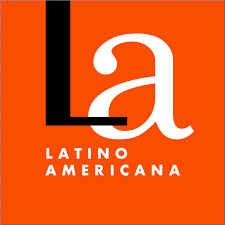Legal reflections on the participation of civil society in the Regional Development Committees of Mining States and Municipalities in Mexico
DOI:
https://doi.org/10.46588/invurnus.v14i2.12Keywords:
Organizational learning, innovation, competitivenessAbstract
The importance of measuring organizational learning in MiPyMes lies in the identification of distinctive dynamic capabilities, which impact innovation and competitiveness levels. In trying to achieve this activity we have identified that the research instrument did not always fit the theory. Therefore, the objective is to demonstrate the degree of adjustment of the observed data, through the implementation of two questionnaires, to a hypothetical model of organizational learning that aims to answer to what extent the measurement of organizational learning in MiPyMes del food sector of Hermosillo, Sonora, impacts the levels of innovation and competitiveness? The results show that using the method of structural equations, there are high levels of KMO, Cronbach’s alpha, and median correlation. This as a result of having increased and rearranged, according to the original model, the items in the second questionnaire, as well as having increased the number of companies surveyed. In conclusion, the improvements in the research instrument resulted in having better evidence of having identified the MSMEs that have achieved significant organizational learning impacting their innovation and competitiveness processes.
Downloads
References
Alaminos, A. y Francés, F. Penalva-Verdú, C. y Santacreu, O. 2015. Análisis multivariante para las ciencias sociales I. Pyldos Ediciones. Cuenca, Ecuador.
Allen, R. y Helms, M. 2006. Linking strategic practices and organizational performance to Porter’s generic strategies. Business Process Management Journal. 12: 433-454.
Ambec, S., Cohen, M.A, Elgie, S. y Lanoie, P. 2013. The Porter Hypothesis at 20: Can Environmental Regulation Enhance Innovation and Competitiveness? Review of Environmental Economics and Policy. 7: 2-22.
Burstein, A. y Vogel, J. 2017. International Trade, Technology, and the Skill Premium Journal of Political Economy. 125: 1356-1412.
Camisón, C. 2002. Las competencias distintivas basadas en activos intangibles. Ch. 6 en Nuevas claves para la dirección estratégica P. Morcillo, y J. Fernández, (Ed), pp.117-151. Ariel, Barcelona.
Chatfield, Ch. 2018. Introduction to Multivariate Analysis. Routledge. New York.
Crossan, M. y Berdrow, I. 2003. Organizational Learning and Strategic Renewal. Estrategic Management Journal. 24:1087-1105.
DENUE.2014. Directorio Estadístico Nacional de Unidades Económicas. INEGI. https://www.inegi.org.mx/app/mapa/denue/
Fraj, E., Matute, J. Melero, I. 2015. Environmental strategies and organizational competitiveness in the hotel industry: The role of learning and innovation as determinants of environmental success. Tourism Management. 46: 30- 42.
Jenkin. T.A. 2013. Extending the 4I Organizational Learning Model: Information Sources, Foraging Processes and Tools. Administrative Sciences. 3: 96-109.
Mesinas, C. 2010. Gestión del Conocimiento: medición del aprendizaje manufacturero en pymes de Hermosillo, Sonora. Universidad de Málaga-EUMED. Málaga.
Powell, W. y Snellman, K. 2004. The Knowlwdgw Economy. Annu. Rev. Sociol. 30: 199-220.
Real, J.C., Leal, A. y Roldan, J.L. 2006. Aprendizaje organizativo y tecnologías de la información. Revista Europea de Dirección y Economía de la Empresa. 15: 9-32.
Ryan, T. 2010. Driving Technical Change. Pragmatic Bookshelf. Dallas.
Saavedra García, M.L. 2012. Una propuesta para la determinación de la competitividad en la pyme latinoamericana. Pensamiento y Gestión. 33: 93-124.












